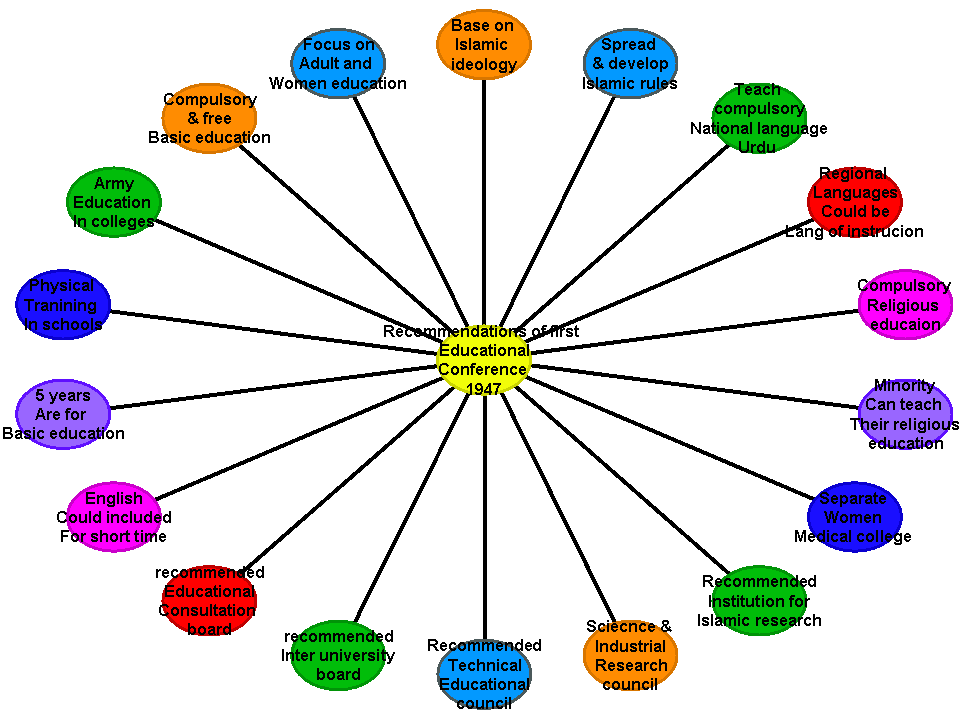After freedom in 1947 a conference was arranged to structure the education system of Pakistan. Quaid-e-azam could not attend this due to illness, but he forwarded his message which later laid down the foundation for recommendations of education policy. His message contained four major aspect;
1). Education system should suit the genius of Pakistan.
2) It should be consonant with our history and culture.
3) It should inculcate high sense of honor and integrity.
4) It should emphasis on science and technology.
The major recommendations of the conference were:
Education should be teamed with Islamic values.
Free and compulsory education in Pakistan.
Emphasis on science and technical education.
Implementation:
This policy could not be implemented properly due to increased number of immigrants and other administrative problems of new born country. So more or less british colonial system was continued.
The article 25-A of Constitution of the Islamic Republic of Pakistan says,
"The state shall provide free and compulsory education to all children of the age of five to sixteen years in such a manner as may be determined by law".
Pakistan achieved independence from British colonial rule on August 14, 1947. At independence 85% of the population was illeterate , and the condition of women and backward areas was even worse.
One of the first steps towards education development in Pakistan was the National Education Conference in 1947. The Quaid-e-Azam, in his message to the Conferences said,
"There is no doubt that the future of our State will and must greatly depend upon the type of education we give to our children, and the way in which we bring them up as future citizens of Pakistan ..... We should not forget that we have to compete with the world which is moving very fast in this direction."
- This conference (Karachi: Nov. 27,Dec 1, 1947) produced a strong philosophy of as well as a number of ambitious recommendations indicating the future goals of education in Pakistan Nevertheless, many of its recommendations remained in documentary form only for the lack of institutional or economic resources to pursue them.


